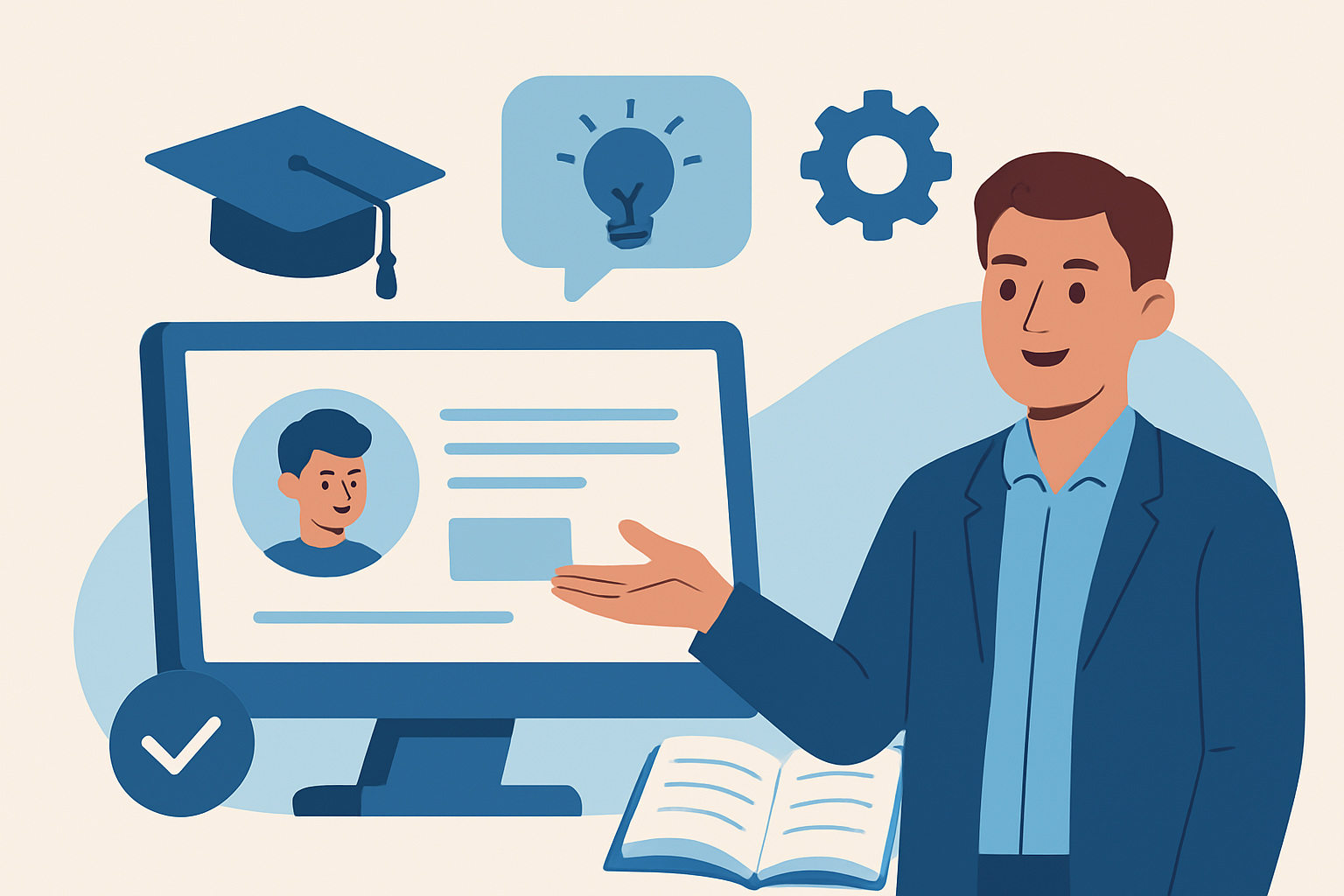Education is evolving faster than ever before. As classrooms become more diverse and technology continues to shape how we learn, traditional one-size-fits-all teaching methods no longer meet the needs of every student. Leading educator and innovator Chris Bressi believes the key to unlocking student potential lies in personalized learning, an approach that adapts instruction, pace, and support to fit the unique needs of each learner.
Chris Bressi’s philosophy centers on one simple truth: every student learns differently. By acknowledging those differences and designing learning experiences around them, teachers can help students take ownership of their education and reach new heights of success.
Understanding Personalized Learning
At its core, personalized learning is about creating a customized educational experience for each student. Instead of teaching to the average, educators design lessons that reflect individual learning styles, interests, and goals.
Chris Bressi defines personalized learning as a partnership between teachers and students. In this model, teachers act as guides rather than lecturers, providing tools and strategies that empower students to explore and apply knowledge in meaningful ways.
This approach shifts the focus from memorization to mastery. Students progress when they demonstrate understanding, not just when they reach a specific grade level or test score. The result is a more engaging, equitable, and effective education system that helps every learner thrive.
The Importance of Knowing Each Learner
For Chris Bressi, successful personalized learning begins with understanding the whole student. Teachers must get to know their learners — their strengths, challenges, motivations, and dreams.
This understanding allows educators to tailor lessons in a way that connects academic content with real-life relevance. For example, a student who loves art can explore geometry through design projects, while another interested in technology can learn physics through coding simulations.
Bressi believes this connection between learning and identity is what keeps students engaged. When students see themselves reflected in their education, they are more likely to participate, persevere, and succeed.
Technology as a Tool for Personalization
Technology plays a critical role in making personalized learning possible. Chris Bressi emphasizes the power of data-driven insights and adaptive tools to meet each student’s needs.
Digital platforms can track progress, identify gaps, and recommend resources tailored to a learner’s pace. Artificial intelligence, for instance, can analyze student responses and provide targeted feedback in real time. Meanwhile, online collaboration tools allow teachers to create dynamic, interactive learning environments that reach students both in and out of the classroom.
However, Bressi also cautions against relying solely on technology. He stresses that while AI and analytics are valuable, they should enhance rather than replace the human relationships that make learning meaningful. The best education combines innovation with empathy.
The Teacher’s Role in a Personalized Classroom
In a personalized learning environment, the teacher’s role evolves from an information provider to a facilitator and mentor. Chris Bressi views teachers as learning architects — professionals who design and adjust educational experiences to support every student’s growth.
This involves continuous feedback, flexible assessment, and open communication. Teachers work closely with students to set goals, track progress, and reflect on what works best for them.
Bressi highlights that this model not only benefits students but also empowers teachers. By having the freedom to adapt lessons to their students’ needs, educators can be more creative, responsive, and effective.
Building Student Agency and Motivation
One of the most powerful outcomes of personalized learning, according to Bressi, is student agency, the ability for learners to take control of their education.
When students have a voice in what and how they learn, they become active participants rather than passive recipients. This autonomy builds motivation, responsibility, and confidence.
Bressi encourages schools to give students choices, letting them decide how to demonstrate understanding, what projects to pursue, or how they want to receive feedback. This sense of ownership helps learners develop critical thinking and problem-solving skills that extend far beyond the classroom.
Emotional Intelligence in Personalized Learning
Personalized learning isn’t just about academics. It’s also about emotional growth. Chris Bressi emphasizes the importance of emotional intelligence (EI) in education, noting that empathy, resilience, and self-awareness are essential for lifelong success.
In a personalized setting, teachers can connect with students on a deeper emotional level, identifying not only how they learn but how they feel about learning.
By integrating social-emotional learning (SEL) into lessons, schools can create a more supportive environment where students feel seen and valued. Bressi believes that emotional safety is the foundation of academic achievement. When students feel confident and cared for, their ability to learn expands.
Collaboration and Community in Personalized Education
While personalized learning focuses on individual growth, Chris Bressi reminds educators that community still matters. Collaboration helps students build communication and teamwork skills, and it teaches them that success often comes from working together.
He encourages schools to foster learning communities where students collaborate on projects, share feedback, and learn from one another’s perspectives. Teachers, parents, and administrators should also work together to ensure every student’s needs are being met.
For Bressi, equity is an essential part of personalization. Every student should have access to the same opportunities, regardless of background or ability. Personalized learning ensures that no learner is overlooked — each one receives the support necessary to succeed.
Challenges and the Path Forward
Implementing personalized learning isn’t without challenges. Schools must address issues like limited resources, teacher training, and data privacy.
Chris Bressi believes these challenges can be overcome through visionary leadership and a commitment to continuous improvement. By investing in teacher development, integrating technology responsibly, and involving families in the learning process, schools can make personalization sustainable and effective.
He also advocates for rethinking assessment systems. Traditional grading often measures compliance rather than comprehension. Bressi encourages performance-based assessments that allow students to demonstrate mastery through projects, portfolios, and real-world problem-solving.
A Future Shaped by Personalized Learning
Chris Bressi envisions a future where every student learns at their own pace, in their own way, and with a clear sense of purpose. Personalized learning transforms classrooms into spaces of curiosity, creativity, and growth.
In this future, success is not defined by standardized test scores but by how well students develop the skills, knowledge, and character to thrive in an ever-changing world.
Bressi’s lessons remind educators that personalization is not just a method but a mindset. It’s about seeing every student as an individual with limitless potential and giving them the tools, encouragement, and flexibility to succeed.
By embracing this vision, schools can create learning environments that inspire passion, nurture talent, and prepare students to lead with confidence and compassion.
Chris Bressi’s work continues to shape the conversation around modern education, proving that when learning becomes personal, it also becomes powerful for teachers, students, and the future of education itself.




